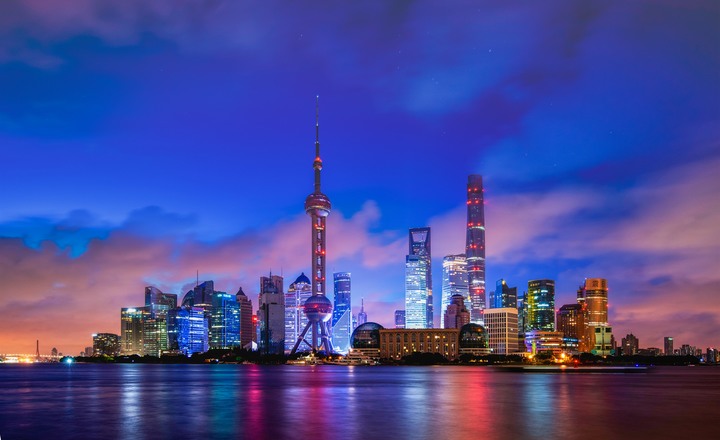Will China’s extraordinary economic growth engines be derailed by the COVID-19?

Contrary to pessimistic outlooks of China’s economy since the onset of the pandemic, where many opined that this would reshape the global supply chain dynamics and the world order, there are also many financial experts and economists who took the other side of the fence, and postulated that the global powerhouse in the Far East will continue its amazing economic growth engine.
That is not to say that the Chinese growth has not been unimpeded by COVID-19. The pandemic put a dent in its GDP, which contracted by 6.8 percent year-on-year during the January-March period, and for the first time in 30 years, China will not set an annual growth target, a clear signal of the impending economic uncertainties ahead.
However, despite the economic headwinds and geopolitical rivalry with the United States, many experts predict that China will emerge stronger from this crisis, and take the lead in revitalising the global economy.
Early success in controlling the virus
While the rest of the world are still struggling to get to grips with the COVID-19 crisis, China has successfully contained the virus, except for a few areas in Heilongjiang, where the virus has resurfaced. However, in other areas, especially in Wuhan, the epicenter of the outbreak, the authorities have swiftly intercepted the spread of the virus through mass testing, aggressive quarantine measures, and the swift adoption of technology.
As a result, the situation has largely stabilized in China and major cities like Shanghai and Beijing have resumed their businesses, albeit with strict measures in place to prevent a resurgence of the virus. Malls have already fully reopened, and manufacturing has resumed up to 80 percent of its usual levels.
Early recovery prompts resumption of international travel
The plunge in outbound tourism will undoubtedly be buffered by China’s domestic tourism, which saw its recovery boosted by the recent May Day holidays, as millions emerged from the recent lockdowns to travel to popular tourist sites. As Marriott International fully resumes its China operations, countries such as South Korea, Germany, Singapore, Japan, France, Italy, and Switzerland are establishing “green channels” with China to resume international travel, albeit restricted only to essential travel. Nevertheless, with the establishment of such channels, it is believed that China is already well on its road to recovery, way ahead of other countries which are still trying to flatten the curve.
Generous stimulus package to aid recovery
Although exports have plunged due to lockdowns and cessation of economic activities in key export markets, China is going big on its stimulus package to kickstart its economy. On the monetary front, the People’s Bank of China (PBoC) has reduced the seven-day repo rate by 20 basis points. The PBoC has also reduced reserve requirements for small- and medium-sized banks from 7 to 6 per cent. To inject the much-needed liquidity to the economy, Chinese banks issued new loans totaling CNY 5.8 trillion (US$865 billion) in the first quarter of 2020.
On the fiscal front, the central government is increasing the 2020 budget deficit-to-GDP ratio to as high as 3.5 per cent, up from 2.8 per cent last year — estimated to unleash CNY 400 billion to boost its economy. The central government also plans to issue CNY 2 to 4 trillion in special treasury bonds to shore up the capital of state-backed funds and policy banks.
Transitioning from export-driven to high-tech
Besides having the luxury of a huge domestic market to cushion the economic impact, China has huge plans to embark on an ambitious restructuring of its economy to rely less on exporting to other countries. Instead, it will focus on domestic consumption and developing “new infrastructure”, such as 5G networks, NEV charging stations, energy efficiency programs, and other initiatives to help build China’s economy of the future.
Tech titans such as Tencent, Baidu and Alibaba are poised to lead the way with a slew of high-tech, AI, IoT, and big data-driven schemes which will drive China’s future forward. This will likely cushion the shift of supply chains and manufacturing from China, to places like India and Southeast Asia, and speed up China’s transition from the world’s manufacturer towards a high-tech and service-driven economy in the years ahead.
Far from weakening China’s position, this restructuring has enabled the country to climb the value-added ladder. The Yangtze River Delta and Guangdong province – regions that used to produce garments and shoes, and assemble electronics – have become hubs for high-tech innovation.
Countermeasures to tackle the challenges of Sino-America decoupling
Even as the United States stepped up its gear in the Sino-American rivalry, China has already started taking measures to prepare for a future with a separate financial system and economic network. Although many countries still rely on the USD as the main source of international transactions, increasing trade with China has seen the CNY/RMB become more widely used in international settlement and trade. That could change with China’s new state digital currency which is already being trialled, and if successful, is poised to replace the USD in the next 15 years.
Moreover, with the United States facing a myriad of problems ranging from the inability to manage the COVID-19 crisis to outbreak of mass protests throughout the country, other countries will have to look to China’s consumers to resuscitate their ailing economies. Despite growing wariness of their reliance on China for supply chains and export sales, China remains the key export market and trading partner of many countries around the world.
China: Long or short?
In short, neither US resistance nor the pandemic is likely to derail China from its transition into an economic powerhouse. It fully recognises that the way forward will be opening its services sector, or becoming an increasingly attractive export destination for advanced economies and emerging-market economies.
At a time when the United States is increasingly turning inward, China seems to be taking the lead in advocating globalization. The trade, investment, and growth opportunities that this commitment generates, will put it in a pole economic position in the aftermath of the COVID-19 crisis.




















